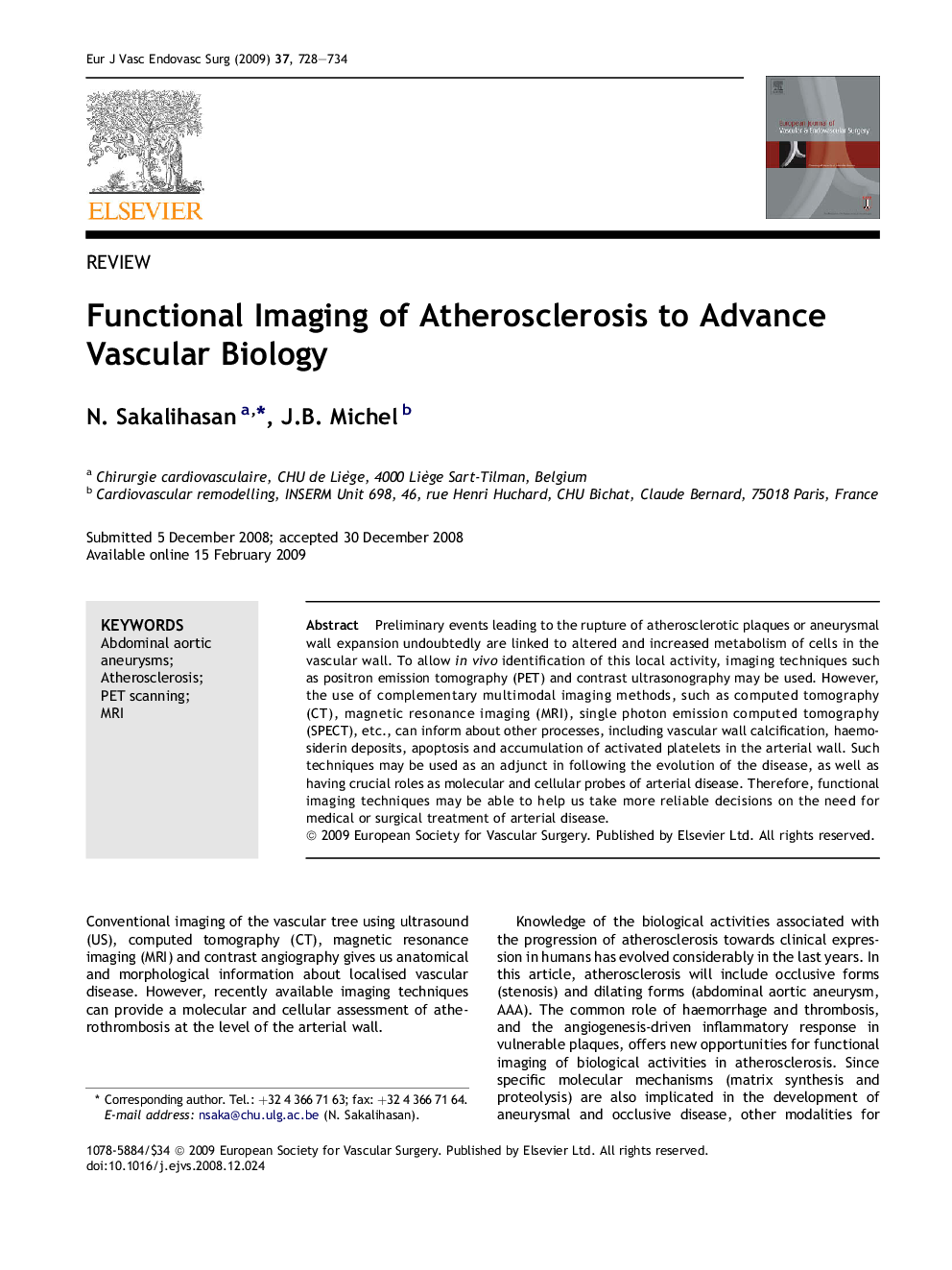| Article ID | Journal | Published Year | Pages | File Type |
|---|---|---|---|---|
| 2913601 | European Journal of Vascular and Endovascular Surgery | 2009 | 7 Pages |
Preliminary events leading to the rupture of atherosclerotic plaques or aneurysmal wall expansion undoubtedly are linked to altered and increased metabolism of cells in the vascular wall. To allow in vivo identification of this local activity, imaging techniques such as positron emission tomography (PET) and contrast ultrasonography may be used. However, the use of complementary multimodal imaging methods, such as computed tomography (CT), magnetic resonance imaging (MRI), single photon emission computed tomography (SPECT), etc., can inform about other processes, including vascular wall calcification, haemosiderin deposits, apoptosis and accumulation of activated platelets in the arterial wall. Such techniques may be used as an adjunct in following the evolution of the disease, as well as having crucial roles as molecular and cellular probes of arterial disease. Therefore, functional imaging techniques may be able to help us take more reliable decisions on the need for medical or surgical treatment of arterial disease.
